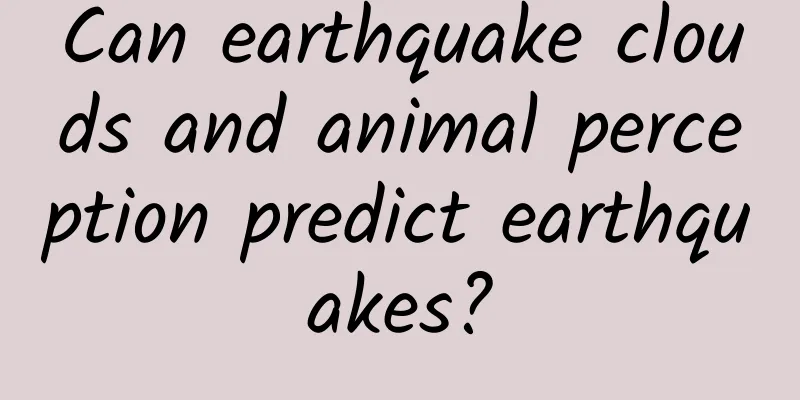What would you see if you looked down from directly above the North Pole?

|
If I gave you a pen, what kind of North Pole would you draw? Do nothing and leave it pure white. Overlooking the glaciers of Greenland in the Arctic | Image source @Visual China Or draw a polar bear walking alone in the snow? Polar bear on the ice floe | Photographer @Huang Kanchun Most of the time, the icy Arctic is pure white. But when summer arrives, you might need to use more paint to paint this polar paradise. The Arctic fox, a representative species of the Arctic, is petite and exquisite | Photographer @徐征泽 Every July and August, during the short Arctic summer, flowers are carpeted in green, and all living things paint a colorful Arctic picture that is fleeting and looks like a paradise. Flowers bloom on Segla Peak on the Norwegian island of Senja | Photographer @Thomas Look at the World In order to open this limited-time polar paradise, we must first reach the cold wonderland at the end of the world and leave some space for the world. 01 Ice World First level: Leave blank space What would you see if you looked down from directly above the North Pole? The Arctic Ocean , the world's smallest and shallowest ocean, covers an area of 7.2% of the Pacific Ocean and is located in the center of the Arctic region. The " blank space " in the Arctic begins with the freezing of the Arctic Ocean. Schematic diagram of the Arctic region | Map by Chen Zhihao/Planetary Research Institute During the long period of geological history, the Earth has experienced several degrees of cooling, with coldness descending on the earth and ice covering the poles. Most of the Arctic Ocean froze, and a crown carved from ice and snow was born in the ocean. Please watch the Arctic Ocean sea ice in horizontal mode. It is common nowadays and is for illustration only | Image source: @Visual China The land and islands around the Arctic Ocean are covered with snow and ice. Snow accumulates over the years and gradually compacts into ice, forming glaciers . Arctic Glacier, Photographer | Photographer @Peter When glaciers gradually expand, connect to each other and form a large area exceeding 50,000 square kilometers, people call it an ice sheet . Greenland Ice Sheet, the world's second largest ice sheet, covers an area of about 1.84 million square kilometers | Image source @Visual China Today, ice and snow are still the main theme of the Arctic landscape, but the Arctic is by no means just a monotonous, even white. During the period of glacier expansion, troughs were eroded among the mountains. Then the glaciers retreated, the sea level rose, and seawater flowed back, giving rise to deep and narrow fjords . Illustration of fjord formation | Map by @Atu & Wang Shenwen/Planetary Research Institute The deep fjords create a winding coastline, and the remains of glaciers are left in the high mountains along the coast. Please watch horizontally, the fjords in the Arctic region of Norway | Photographer @Su Tie When glaciers near the sea break off and drift out to sea, icebergs are formed. Please watch the seagulls resting on the iceberg in horizontal mode | Photographer @Thomas Look at the World Before you enter the Arctic Circle, you might see icebergs floating off the coast of Newfoundland, Canada , the southernmost point in the Northern Hemisphere where icebergs can be seen regularly. Every year in May and June, icebergs of all sizes that break off from the Greenland Ice Shelf are driven by ocean currents southward into the waters northeast of Newfoundland, Canada, forming an extremely spectacular Arctic Iceberg Corridor, also known as "Iceberg Alley" | Image source @Visual China The Arctic icebergs have various shapes, which make you marvel at the wonders of nature. Some are like rocky cliffs; Icebergs near Jakobsheven Icefjord, Greenland | Image source @Visual China Some are like huge ships sailing into the ocean; Icebergs in the Westfjords of Greenland | Cindy Shulin of Iceland Some are like modern sculptures with unique shapes. Icebergs melt due to factors such as waves and temperature, and take on different shapes | Photographer @Mark.C This is the first Arctic, a magnificent world of ice and snow, and a grand “blank space”. 02 The arrival of people Second level: ink Who will walk into this "blank space"? In the Arctic, solar radiation decreases layer by layer, and most of the year is winter, with the average monthly temperature below zero. In meteorology, this is called the " polar ice climate ." Finland, trees covered in snow at sunrise | Image source @Visual China Winter is too long, the sun is always below the horizon, giving rise to a long night and endless darkness. Humans instinctively regard darkness as fear. The Northern Lights are easy to observe during the polar night. Antidepressants are given to residents in the Nordic region in winter to alleviate seasonal depression caused by the polar night . Photographer @李冬 The Inuit , the main indigenous people of the Arctic, regard the Northern Lights as torches from heaven and signposts used by gods to guide the dead into heaven. About 15,000 years ago, the Inuit entered the Arctic region and left the earliest traces of ink on this "blank space". Inuit | Image source @Visual China Why did the Inuit enter the Arctic? Some say that they were conquerors from Asia who conquered earlier settlers; others say that they were refugees who were defeated in the struggle with North American Indians and had to flee to the edge of the continent, using the ice and snow as a natural barrier. In any case, the Inuit survived in the Arctic and created their own national ice and snow epic . Please watch horizontally, Inuit people | Image source @Wikimedia Commons They built igloos or tents on ice floes or coastal land and made a living by hunting. Men hunted seals, walruses, and beluga whales, and women used the animals' skins to sew necessities for survival. Canada, an Inuit prepares to hunt | Image source @Visual China In the polar regions where there are no vegetables or fruits, the Inuit supplement vitamins and prolong energy consumption by eating raw meat, and seals are an important food source for them. The habit of eating raw meat and drinking blood has been maintained for thousands of years, allowing them to survive for generations in the vast Eurasian continent, the northern edge of the American continent and Greenland. Inuit settlement in the Amasalik region of East Greenland | Image source @Visual China In the Scandinavian Peninsula , separated from Greenland by a sea, the Sami people write polar fairy tales among the mountains and forests of the Arctic. Sami people | Image source @Visual China 8,000-10,000 years ago, this ancient European nation moved from Central Europe or Central Europe to Northern Europe. Later, due to the expansion of the main Nordic ethnic groups, they were forced to migrate from southern Finland to near the Arctic Circle. Sami settlement in Finnish Lapland | Photographer @Miaodi The Sami people mostly make their livings by fishing and hunting. Reindeer are the basis of their survival. They rely on reindeer as a source of food, use them to make clothes and tents, and rely on reindeer to pull sleds and carry heavy objects. Please watch in horizontal mode. The Murmansk region of Russia is also a distribution point for the Sami people. The village of Lovozero is the cultural center of the local Sami people and raises a large number of deer | Image source @Visual China The Sami people's traditional song " Yoik " records the scenes of Sami people's life around the polar regions. Even though the snowy roads are winding and the vegetation is sparse, humans can still create beauty and fairy tales in the cold weather. Traditional Sami folk songs What is life like for the Sami people? / The life of the Sami people is leisurely and comfortable With skis on our feet/lasso on our shoulders/day or night/our faithful dogs keep us company The winding snowy road takes us far away/wherever there is moss, there we will make our home Then, the industrialization process continued to advance into the areas inhabited by the indigenous peoples of the Arctic. Explorers entered, and Christianity entered. Rovaminie in Finnish Lapland is considered the hometown of Santa Claus. The picture shows Santa Claus being pulled by reindeer | Image source @Visual China Modern settlements were built, and people painted their houses in colorful colors, creating a fairytale town at the end of the world. The small town of Uummannaq in Greenland has many colorful houses. Houses in the Arctic are usually small in size and have limited windows | Photographer @ThomasLook at the World This is the second Arctic, where traces left by humans are recorded: writing epics of survival on ice and snow, and creating beautiful and romantic fairy tales. But all of this cannot compare to the splendor of the Arctic itself, and such splendor will be available for a limited time. 03 Limited Time Park The third level: heavy color The Arctic tern is born in the Arctic and spends the winter in the Antarctic. It travels back and forth between the two poles of the earth every year, with a round-trip distance of up to 9,000 kilometers per year. Please watch in horizontal mode, the migration route of the Arctic tern | Map by @Chen Zhihao/Planet Research Institute As you look here, Arctic terns may be reaching the destination of their long journey: the summer Arctic. Arctic tern | Photographer @杨旭东 July to August every year is the summer in the Arctic. In the polar day mode, the sun shines for a long time, and the temperature in some areas can reach 10 degrees Celsius. The performance of creatures is about to begin. Illustration of the extent of Arctic sea ice in winter and summer | Map by Chen Zhihao/Planetary Research Institute All living things are awakening and becoming active, and the Polar Paradise is open for a limited time. The tundra , composed of mosses, lichens, herbs and some short shrubs, covers the vast polar regions, trying to extend the boundaries of life. Arctic lichens | Photographer @陈小琳 The Arctic dryas have fruits covered in white hairs, and the seeds are dispersed in the warm summer winds. Arctic Dryas | Photographer @Peter
The four-sided rock will enter its peak flowering period, with the bell-shaped flower buds drooping downwards and blooming to their fullest. Four-sided rock whiskers blooming in the polar regions | Photographer @Peter All kinds of plants on the tundra also seize the short two months of summer to bloom and sow seeds, embellishing the desolate polar region. Polar tundra plant collection | Image source @Visual China & Xu Zhengze & Chen Jianwei In order to adapt to the cold polar climate, many animals in the Arctic have evolved characteristics that adapt to the polar environment and have thick fur. Musk oxen, lynx, Yakut horses, and American martens in the ice and snow | Image source: @Visual China & Chen Jianwei But by summer, many animals will look different. The reindeer will shed their winter white fur for the gray-brown summer coats they wear. They are the masters of the tundra, where they breed and reproduce. Svalbard reindeer living on the tundra | Photographer @Peter The long hours of daylight in the summer allow lemmings to reproduce in large numbers, and the Arctic foxes that feed on lemmings can also have a good meal. After changing into summer clothes, they hide in the fields and look agile. Another species that also has the characteristic of molting is the Arctic hare . They are big guys in the rabbit family and their body length can exceed 50 cm. Arctic hare in Greenland | Photographer @徐征泽 The Arctic puffin , a "fishing master" during the breeding season in spring and summer, has an orange-red beak and is vividly called the "clown of the sea". It is brightly colored and looks pleasing to the eye. During the breeding season, the beak of the Atlantic puffin changes color from gray to bright orange-red | Photographer @Today is cloudy If we turn our eyes to the polar sea, we may see the kittiwakes that live here all year round. They do not have the fourth toe that is convenient for most birds to grasp branches, but instead have webbed feet, which makes it easier for them to walk on ice floes. Three-toed gulls on the ice floe in Svalbard | Photographer @徐征泽 Seals and walruses live on coastal land and sea ice. In order to cope with the extremely cold weather, they have built up a thick layer of fat. They can only crawl forward on flat surfaces, but can come and go freely in the sea. Bearded seal on ice | Image source @Visual China When part of the sea ice melts in the summer and seals dive into the water, the polar bear , the overlord and king of the Arctic, needs to quietly wait for the opportunity to hunt on the ice floes, or dive into the water and follow its prey, the seals. Polar Bear | Photographer @Peter Polar bears may encounter whales that have traveled from far away. Baleen whales feed on schools of krill and cruise in the Arctic Ocean and surrounding marginal seas. In summer, humpback whales travel to the Arctic to feed. This picture shows a whale swimming to Ilulissat, Greenland. | Image source @Visual China "Eagles soar in the sky, fish swim in the shallows, and all creatures in the frosty sky compete for freedom." All living things in the Arctic create a colorful picture of life in the polar regions. Arctic flora and fauna illustrations | Image source: Visual China & Tuchong Creative & Chen Jianwei, drawing by A Tu / Planet Research Institute At this point, a multiple Arctic is revealed before us, with “blank space” created by ice and snow, “ink dots” left by humans, and “heavy colors” painted by living beings. But the Arctic region has more than 2,000 square kilometers of land. Where can you see the multiple Arctic regions? Arctic natural scenery | Photographer @ludi路影记 Greenland , the heart of the Arctic, is the largest island on Earth. It has the largest ice body in the Northern Hemisphere, the Greenland Ice Sheet, with a total area of more than 1.7 million square kilometers. Most of Greenland is located within the Arctic Circle, where glaciers dominate and the polar regions are the main theme. In Greenland, you can see the many faces of the Arctic. Please view Greenland in horizontal mode | Photographer @徐征泽 From the pure glaciers that have been frozen for thousands of years to the Inuit people who have settled here for generations, to the paradise of life consisting of tundra flowers, polar bears and more, it is presented to you one by one. This article was created by Written by : Yue Fan Image : Pan Chenxia Design : A Tu Map : Chen Zhihao Proofreading : Gu Yuehu & Wang Luzhi & Wu Xintian 【Main references】 [1] Duan Xu. The Svalbard Code: Duan Xu's Arctic Natural History Notes[M]. 2018.1 (Reprinted in 2024.4). Beijing: Chemical Industry Press, 2024. [2] Liu Desheng, ed. World Physical Geography (Second Edition)[M]. January 1986. Beijing: Higher Education Press, 1986. [3] Qin Dahe, ed. Introduction to Cryospheric Science (revised edition)[M]. September 2018. Beijing: Science Education Press, 2018. [4] Cheng Qiutang. The Northern European Sami and their Historical Changes[D]. East China Normal University, 2009. [5] Pan Min. Research on Arctic Aboriginals[M]. February 2012. Beijing: Current Affairs Press, 2012. [6] Yu Chun, ed. Arctic shipping routes change the future of the world[M]. January 2021. Shanghai: Shanghai Jiaotong Press, 2021. [7] David Birney, ed. Encyclopedia of Animals [M]. 1st edition, March 2019. Guangzhou: Nanfang Daily Press, 2018-5. |
<<: Did Bai Juyi also suffer from depression? Is it the same as what we are talking about today?
Recommend
The logo and mascot of the Spring Festival Gala for the Year of the Rabbit are officially announced! What did the world's earliest rabbit look like?
The Year of the Rabbit is here. "Rabbit Yuan...
Brand Promotion Guide on Station B!
Bilibili, a video content community that started ...
There is a lot of sand on the earth, and there are even more stars in the universe. How many galaxies are there in the universe?
How much sand is there on Earth? This is a questi...
Meizu MX4 Pro first experience: what can you get for spending an extra 700 yuan?
Meizu MX4 Pro is here, it is the second phone lau...
An information flow optimizer who consumes more than 2 million per month will teach you how to do advertising scientifically!
With the vigorous development of mobile communica...
How difficult is it to grasp something you can't feel with your mind?
In the science fiction drama "Love, Death &a...
SAIC Motor delivered 750 “government reception vehicles” to the CIIE
(October 12, 2024, Shanghai) Today, the "Del...
Tips and precautions for placing Tik Tok information flow ads!
As an emerging advertising model, information flo...
"One medicine cures many diseases" is no longer a legend? "Panacea" may become a reality!
□ Feng Yan, Science Times reporter Wang Chun How ...
Programmers interpret the "Traveling Frog" from a God's perspective. Is your frog really traveling?
Introduction There is a programmer on Zhihu who s...
Tips for optimizing information flow APP delivery!
In the actual delivery, how do we find the proble...
What is the secret behind TikTok’s explosive user growth?
Think first: How do you measure user growth ? Wha...
Is it possible to achieve vegetable freedom by growing vegetables on the balcony?
Now everyone knows that vegetables are worth grow...
This kind of food is recommended by the whole network in summer, but I advise you not to eat it
Summer is here, and it is a great season to eat r...
How much does it cost to attract investment in the Bengbu Tea Mini Program? What is the investment price of Bengbu Tea Mini Program?
The overall investment promotion of Bengbu Tea Mi...









